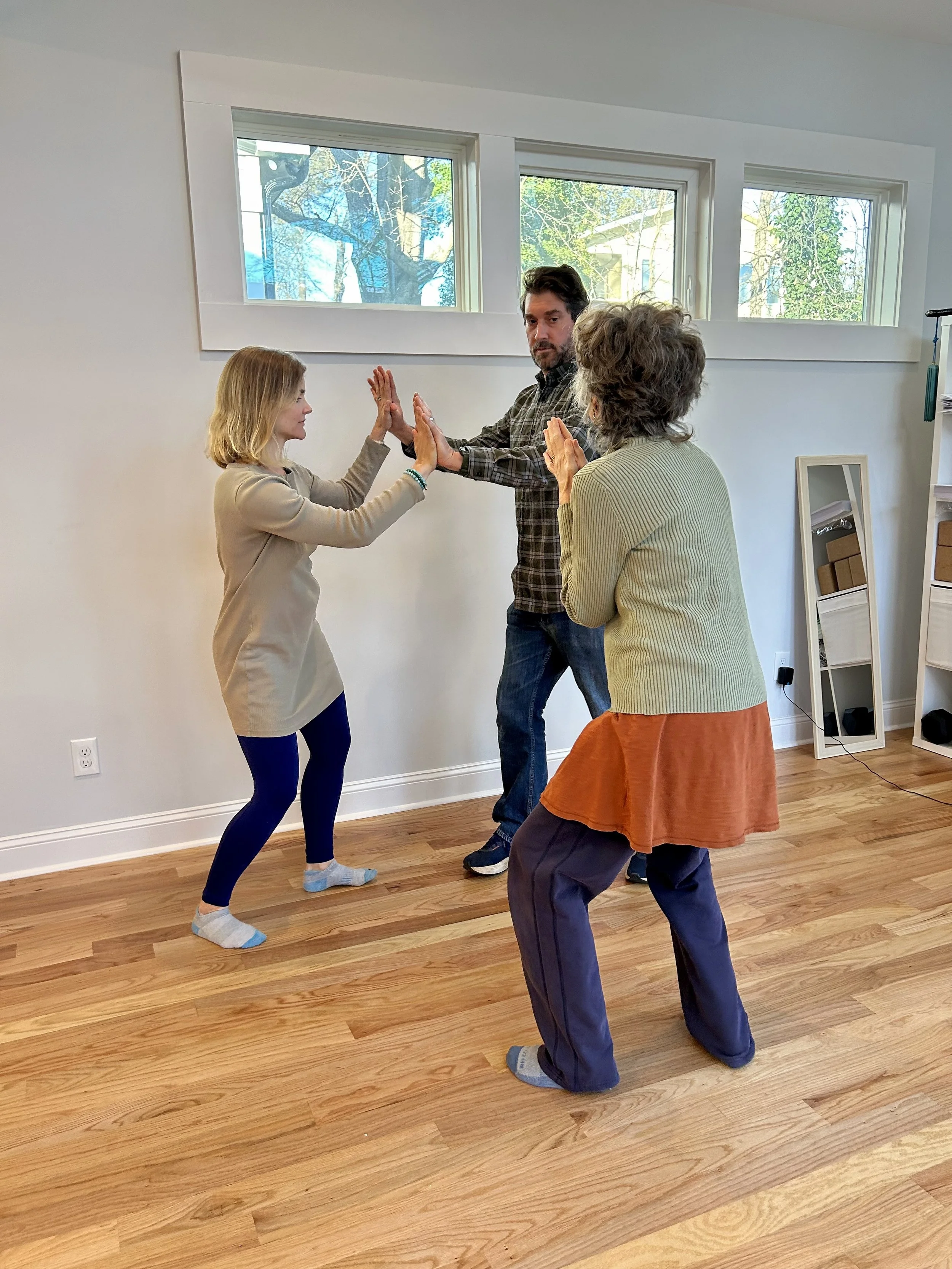Polyvagal Theory Articles
Re-Patterning the Lover Dance: Chi for Two Awareness of Our Polyvagal Anatomy, “Biting/Snapping,” and Language
First published in the American Journal of Dance Therapy (virtually September, 2024; in-print forthcoming October, 2024 – Volume 46, Number 2, 158-166) by Springer Nature
When lovers sense anxiousness in their bodies—and want to "bite each other's heads off," they might go to couples counseling for help with communication. Like parents trying to help siblings "use their words," counselors try to help lovers talk. In couples dance/movement therapy, it is helpful to look at the physiology of language with awareness provided by Chi for Two.
Polyvagal theory and peek-a-boo: How the therapeutic pas de deux heals attachment trauma
Excerpt from November 2015 article in Body, Movement and Dance in Psychotherapy
Stephen Porges’ book Polyvagal Theory (2011) helps us understand the biology of attachment. When we sense that we are adequately safe, our bodies use what Porges calls our Social Engagement system. Our Social Engagement system helps us to navigate the nuanced dance of relationship. The relationship between primary-caregiver and infant has the potential to facilitate this needed sense of safety. When this relationship creates the opposite, insecurity, a therapeutic relationship can provide a reparative experience.
Is My Anxiety Attracting Your Depression?
Originally published in Elephant Journal Nov 25, 2015 - Polyvagal Theory and Romance
Faced with life-threatening danger, Fight/Flight is the defense option I want. So, I kinda live in Fight/Flight all the time. And my anxiety looks productive. I have all this energy. I need to channel it somewhere. Clean the bathroom. Mow the lawn. Write all the thank-you notes in one sitting. But the more I do, the less you do? Is my anxiety attracting your depression?
Technology’s Potential to Disembody: How Polyvagal Theory Helps Me Picture It
Originally published in Elephant Journal Sept. 15, 2016 - How Polyvagal Theory Helps Me Overcome Technological Disembodiment
At its best, technology can enliven. At its worst, it can overwhelm. Technology offers an endless buffet of sensual information. To avoid becoming overwhelmed, we must be able to sense when our bodies are full of stimulation so that we can feel when to push away from the table so to speak.
When I first learned about Stephen Porges’ polyvagal theory, I saw that it created a framework within which I could fit every aspect of my life including technology. It helped me understand my personal journey and the journeys of all the counseling and dance therapy clients that I have worked with over the twenty-three years that I have been a therapist.
Polyvagal theory helps us picture our nervous system functioning.
Polyvagal Theory in Practice
Originally published in Counseling Today - June 2016, an American Counseling Association Publication
Picturing brain chemistry can be something like picturing a hurricane. Although we can imagine bad weather, it is difficult to imagine changing that weather. But Stephen Porges’ polyvagal theory gives counselors a useful picture of the nervous system that can guide us in our efforts to help clients.
Porges’ polyvagal theory developed out of his experiments with the vagus nerve. The vagus nerve serves the parasympathetic nervous system, which is the calming aspect of our nervous system mechanics. The parasympathetic part of the autonomic nervous system balances the sympathetic active part, but in much more nuanced ways than we understood before polyvagal theory.







